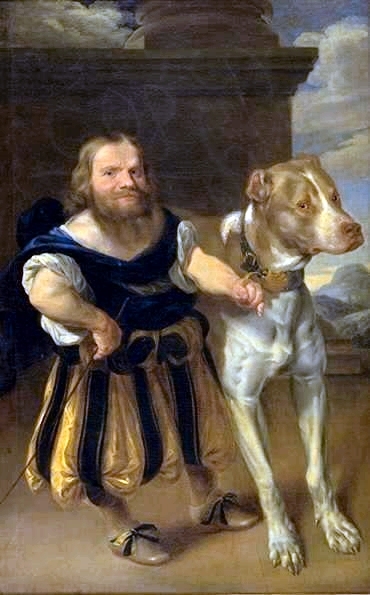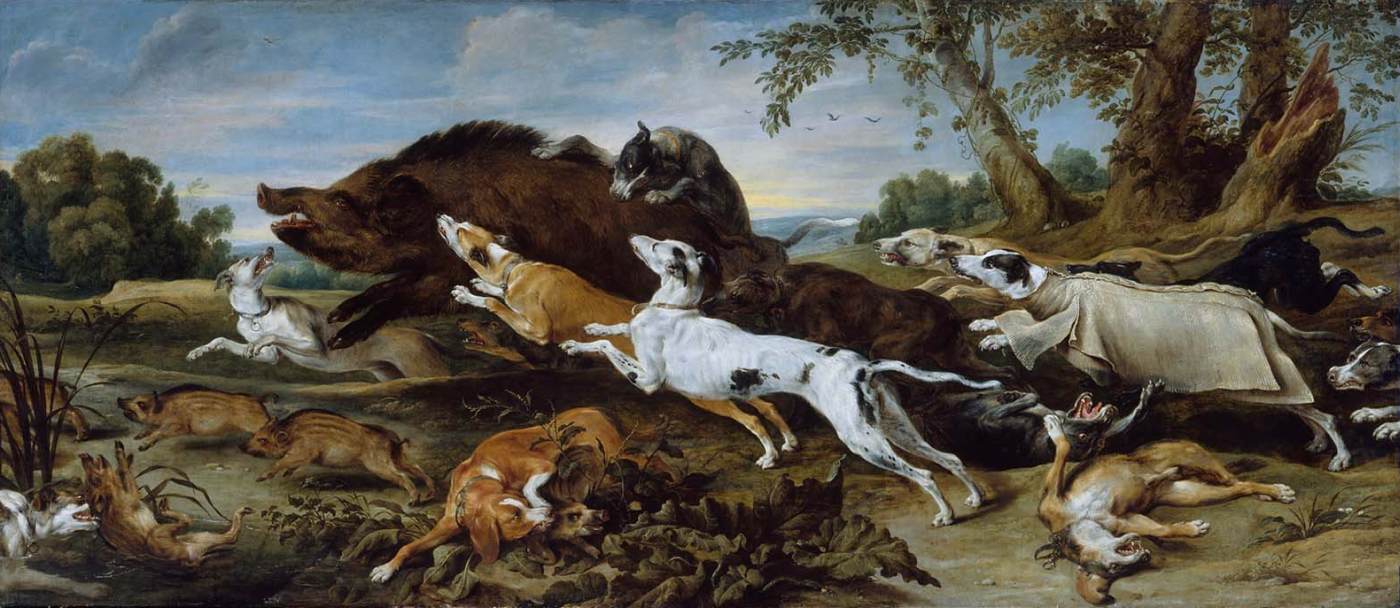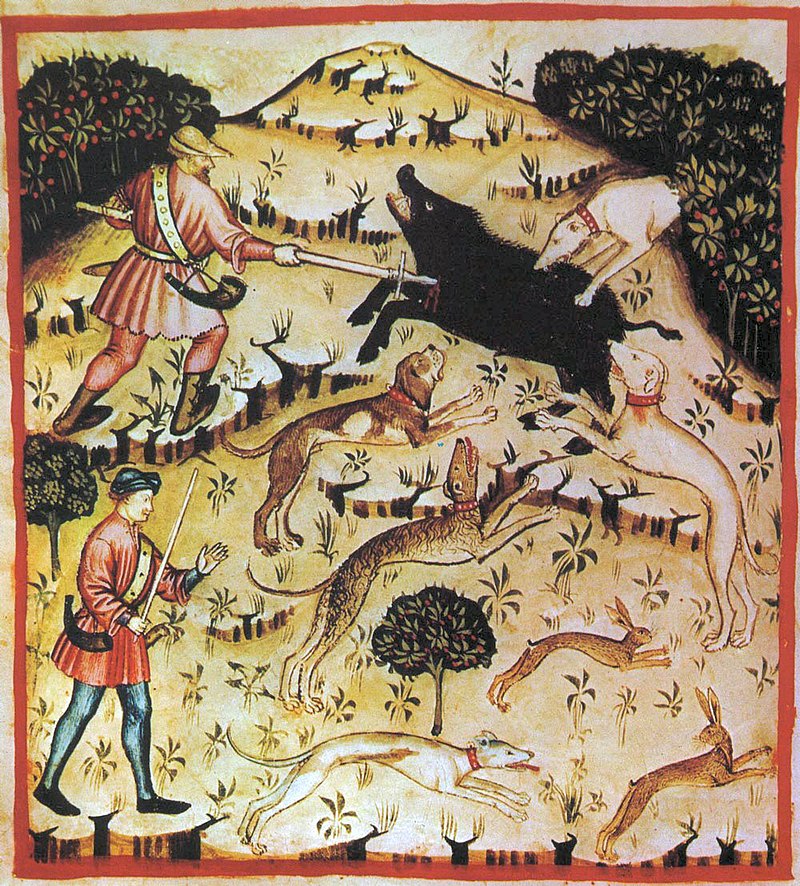1890 - 1900+s Great Dane pictures, looks like they were slightly shorter and heavier in built back then, weren't they?
View AttachmentView AttachmentView AttachmentView AttachmentView AttachmentView AttachmentSometimes from Great Dane historical pictures of that time (which is basically the 1890-1930 range) I have noticed there are two variants of the breed, the tall and lean ones and the shorter and stockier ones.
I've also found paintings that trace back way further than these pictures, probably 1750 -1850 range, which depicts Great Dane ONLY in the shorter and stockier bauplan, such as -
View AttachmentView AttachmentView AttachmentView AttachmentView AttachmentIs this vague difference due to perhaps different roles? Like taller and leaner ones were used for dog racing while stockier ones where used as boarhounds?
My guess is that originally Great Danes were all bred to be only and exclusively boarhounds, true catchdogs in their own manner.
To be what they were they had to develop the robust boarhound bauplan to be able to go mouth to mouth with large game and struggle with their limbs implanted on the ground like columns. Something may have changed with the start of 1900s, maybe some Great Danes got introduced in the dog racing world and by consequence they were since they selectively bred, perhaps even by crossing them with greyhounds, to perform well in dog racing.
The result would have been them adapting the taller and lankier built we know of.
This is just my impression by the way, and I'm not totally sure about that either. Just because they may been crossed with greyhounds (my pure speculation) for dog racing doesn't mean they couldn't perform well as catchdogs, they would absolutely. Just like a lankier dogal can lug on a boar as if it was a dogo argentino.
I've been waiting till I had enough time to respond to this properly, this is one of those topics I can dive very very very deep on, but I'll try not to go crazy.
Even these old paintings are still kind of "new" and many from after the ancestors of the great dane had retired from working as boarhounds. The great dane didn't get recognised as a purebreed until 1887, but even before that, for hundreds of years in fact, some aristocrats who were "enthusiasts" of european boarhounds were breeding them just to keep as pets around the "court" or estate or whatever, and they were already breeding them for size at this point. This started for some lineages as early as the 1500s/1600s. At this time no one distinguished between german or belgian or dutch or english or spanish boarhounds, they were all just boarhounds, and you can see they were all basically similar-
Germany mid 1600s

Spain mid 1600s-

Spain late 1600s-

England early 1600s-

England mid 1500s-

England 1600s-

Belgium early 1600s-

Netherlands early 1600s-

France 1775 (first mention of "great dane" on record)-

All of the above dogs are actually pets bred to be pets, even way back then. Even way back then some people had taken in boarhounds and started breeding them to be "chamber hounds", to sleep in the bedrooms of rich children and deter kidnappers, and also be paraded around at parties near dwarfs for a laugh.
Not just the Great Dane Descends from these dogs, the English mastiff does too. In fact the English dog up there with the children is a great great great """" grandfather to all english mastiffs that live today. At one point, in the 1600s and 1700s, great danes and english mastiffs were the same and both looked like great danes.
But all the dogs above DESCEND from boar hounds. Actual working boarhounds. THOSE dogs varied, because they weren't bred for looks, they were bred to work. Back then they were "mongrel pig dogs", so you had tall ones, short ones, skinny ones, thick ones, hairy ones, smooth ones, etc etc etc. Because they were just rugged working dogs made by crossing buthcher's alaunts with greyhounds or foxhounds with bandogs and deerhounds, or bulldogs with wolfhounds or whatever.







Scattered among these rag tag mongrel working dogs you see the odd individual that is kind of an impressive looking "boar hound", like a mix between tall celtic hound and a broad-mouthed alano. Those were of course the striking ones that would be favoured when artistocrats started keeping "chamber hounds", but they have this "mongrel pig dog" origin. The chamber hounds emerged from this soup of working dogs. The variety in their phenotype would get less and less over the centuries, until today we have the two distinctive breeds in the great dane and the english mastiff, two very different "takes" on the idea (the great dane definitely more faithful to the original, at least it is still kind of an athlete). But in truth both have been separated from their original purpose for a long time.
With colonialism and settling new wild lands they'd bring boarhounds and wolfhounds and bulldogs and etc all back to life. In Europe the real working varieties were already dying out in the 1500s/1600s and being replaced by the trendy new sport of using firearms and gun dogs. More and more it was just these relic "chamber hounds" that were the only trace remaining of the old boarhounds, and meanwhile bulldogs were becoming very very small and compact for bloodsports and dog fighting and the actual "bandogge" was becoming a thing of the past as well.
The colonies had vast wilderness and lots of big game and they kept the old european hunting style and old european dogs alive by using the old style of performance breeding where you readily cross different types and work hard and cull the soft ones and etc, caring only about performance and not looks.
By the 1800s all the best dogs were to be found in India, Sri Lanka, South East Asia, Africa, Australia, North America, Latin America, etc etc, because that is where the work was still being done and the performance breeding was still cutthroat and serious. Now a lot of those cultures have died out as well, and all are at risk of dying out, and when they do you lose the real dogs, and just get these "mascotts" that kind of hint at dogs that used to exist. Sometimes kind of accurately like the great dane, but you run the risk of completely losing the memory like we see with english mastiffs and english bulldogs. To keep the real thing you need to keep the work.
That's why a bull arab is actually a better representative of a european boarhound than a real "blue blood" european boarhound like a great dane. Even though the bull arab was "invented" in the 1970s. When you look at the old hunting paintings you can see lots of "bull arabs", few "great danes", and zero "english mastiffs". Ditto for old bull baiting artworks. Lots of apbts and sbts (even though the paintings pre-date those breeds), no "english bulldogs".
The "real thing" only exists with the actual work. You can't "preserve" dogs without the work. That is where the kennel club world made a major critical error. They thought you could preserve the blood "pure" and that would preserve the animal as is. But it doesn't work, and didn't work. They had to focus on preserving the work, but they didn't.
Some breeds have held together nicely. Like in that very very very old hunting painting above, you can see a deerhound and it is still the same thing today. That is why I like the deerhound as a breed.